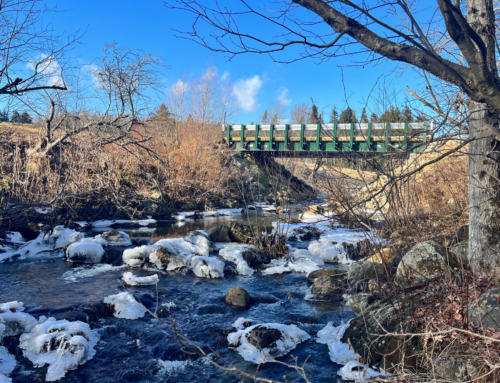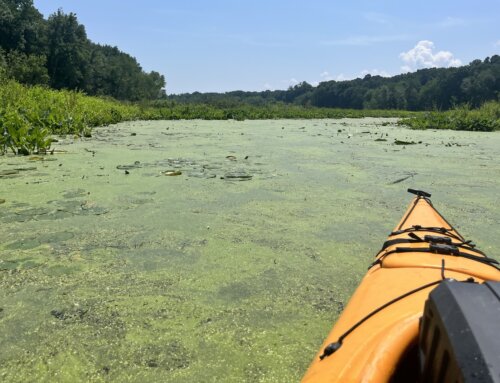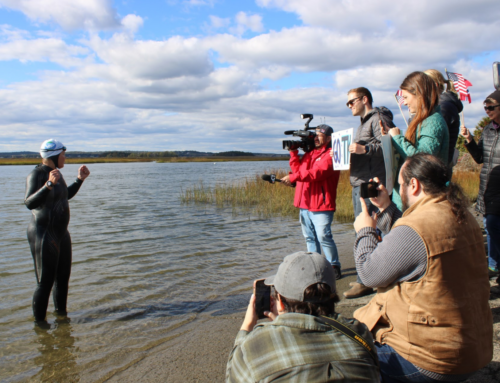Vermont. January 4, 2010.
A 2003 research paper reported on in a 2005 River Currents column found that base line salt concentrations in our rivers has increased over the past 30 years and the report predicted that the salt levels will continue to rise. Three more recent studies have now confirmed those earlier findings. The newer studies include more tributary rivers within our watershed: the Sleeper River at St Johnsbury, VT; the Ammonoosuc River at Bethlehem, NH; the Green River at Colrain, MA; the Hockanum River near East Hartford, CT and the Salmon River near East Hampton, CT.
According to one of the new studies, the annual mean chloride concentrations in the Connecticut River increased 344 percent during their test period of 1900-1917 compared to 1966-2000. Given that some of the study areas are rural, have stable populations with a stable road system and that there has been no dramatic increase in salt use and yet there was an increase in salt levels may mean that we are seeing the baseline increase due to salt accumulating in soils, groundwater and rivers themselves.
Along with increasing application of road salt, the expansion of parking areas that require deicing, increases in the number of septic systems, increases in the volume of wastewater discharge, and the arrival of saline groundwater plumes from historic uncovered landfills and salt-storage areas are finally arriving at our rivers and are reasons for the increases in chloride load. Impervious surfaces like roads, roofs, driveways, and parking areas do not allow water to percolate down into the soil and that speeds the water off the surface and into the river. The water takes with it all of the pollutants found on the surface, in this case salt.
Turning our fresh water to salt water does not bode well for our river. Animals at the lowest levels on the food chain are the most sensitive to above normal salt concentrations. One study shows that salt concentrations in some streams outside our watershed already have salt concentration levels found in river estuaries. Unlike our aquatic species up here in the North Country, the Connecticut River estuary species are salt tolerant.
Road salt kills off salt intolerant native species of trees and shrubs next to roads. There is a flip side to the killing off native species; non-native salt tolerant species begin to thrive in new areas. One example is Phragmities; an invasive marsh plant normally found in coastal wetlands that are making its way into the North Country along salted roadways replacing our cattails.
There would be enormous impacts if the base of the food chain and plant life were diminished by the increase in chloride levels, an impact that could be felt all the way to the top of the food chain including humans. We have not reached a disaster level yet. Even with the large jump in concentrations of salt in our river we are still below the chronic impact level set by EPA but we are gaining on it quickly.
Increased salt levels occur in both urban and rural settings. The increase has been measured year round but as you would expect spring, summer and fall levels of chloride concentrations were only 10 to 100 times higher in exposed waters compared to isolated waters. During the winter though, concentrations were up to 1,000 times higher than in the isolated waters.
One study found that if chlorides do soak into the soil due to high concentrations like an uncovered salt pile and eventually make their way into ground water the chlorides can still make their way to rivers. Ground water becomes the base flow for rivers during low flow periods in the summer and since it is not diluted by river flow, the ground water is feeding the chlorides back into the surface water at unnaturally higher levels.
What is to be done? Protect or reestablish natural vegetated riparian zones of sufficient width between salt use and our waters to stop the salty runoff before it finds its way into the river. Install proper stormwater treatment systems in all parking areas so the water does not head down a storm drain and into the river untreated. Cover all salt piles not inside a shed. Construct a berm between even covered salt storage piles to stop leachate or snow melt from running into the surface water. Do the same around snow disposal areas.
Take personal responsibility for your own salt use. How? If you are near waterways or drainage to waterways use salt only when absolutely necessary; substitute wood ash or sand for salt; store even small amounts of salt under a roof or in a sealed container; sweep up left over salt after every storm; move snow piles away from walkways and driveways to avoid ice buildup.
Watershed states have a “bare roads” policy when it comes to applying salt during snowstorms. Maybe in light of our fresh water turning to salt we should rethink that policy. Who knows, we might even consider driving more slowly and carefully when it is snowing or, even if the deities of Detroit forbid, not drive at all if possible while the roads are slippery!
David L. Deen is River Steward for the Connecticut River Watershed Council. CRC has been an articulate voice for the Connecticut River for more than half a century.
This article is based on the research papers:
Water-Quality Trends in New England Rivers During the 20th Century by Keith W. Robinson, Jean P. Campbell, and Norbert A. Jaworski, Pembroke, New Hampshire 2003
Increased Salinization of Fresh Water in the Northeastern United States, Sujay S Kaushal, et al, Proceedings of the National Academy of Sciences of the United States of America, September, 2005.
Wadable Streams Assessment: A Collaborative Survey of the Nation’s Streams United States, Environmental Protection Agency Office of Water Washington, DC 20460 May 2006
Chloride in Groundwater and Surface Water in Areas Underlain by the Glacial Aquifer System, Northern United States by John R. Mullaney, David L. Lorenz, and Alan D. Arntson, U.S. Geological Survey, Reston, Virginia: 2009







